Aquaculture is a rapidly growing industry that plays a vital role in meeting the world’s increasing demand for seafood. Dissolved oxygen levels are important in aquaculture because they affect the growth and health of aquatic organisms. They also play a role in photosynthesis, which is how aquatic organisms generate their food.
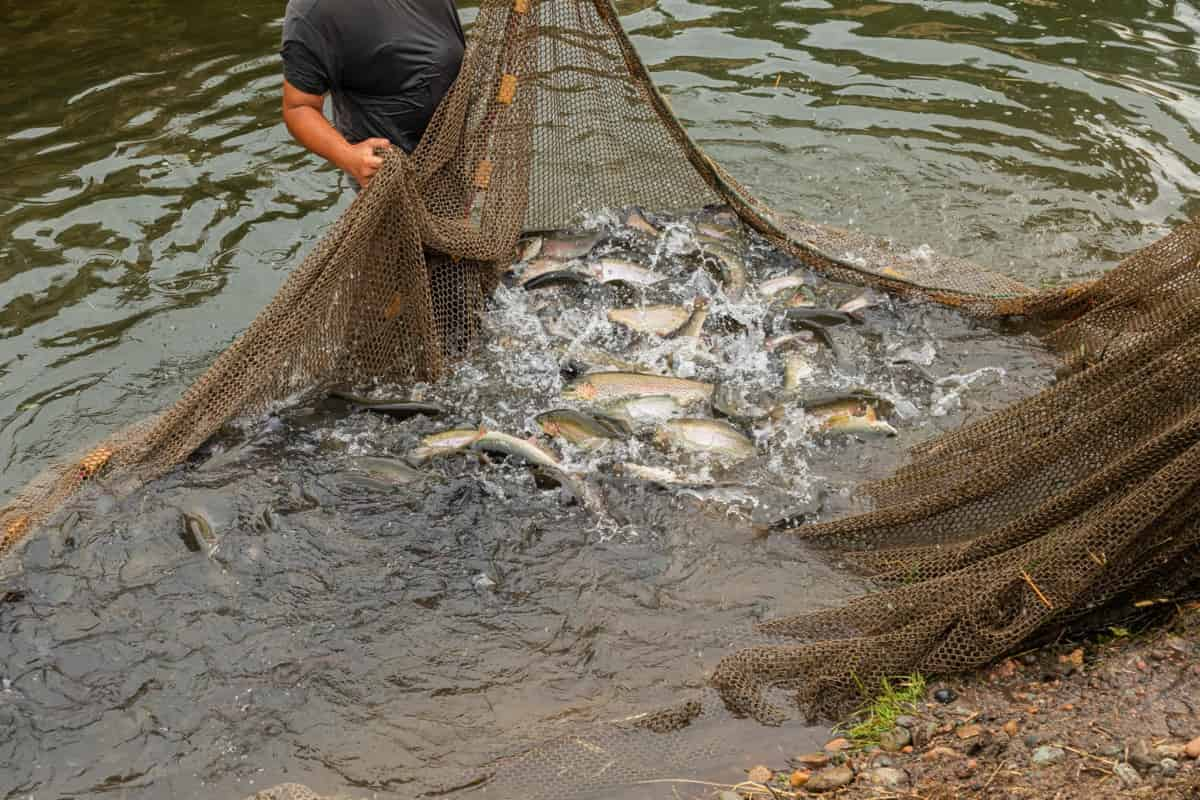
Importance of Dissolved Oxygen Level in Aquaculture
What is Dissolved Oxygen (DO) in Aquaculture?
Aquaculture raises and cultivates fish in an enclosed environment. Fish are farmed for various reasons, including human consumption, baitfish, and stocking lakes and ponds. Aquaculture can be done in both fresh and saltwater environments. Dissolved oxygen (DO) measures how much oxygen is dissolved in water. DO is an important parameter to monitor in aquaculture because it directly affects the health of the fish.
Low dissolved oxygen levels can cause fish stress, leading to disease and death. Dissolved oxygen (DO) is one of aquaculture’s most important water quality parameters. DO levels influence the growth and health of aquatic animals, as well as the overall productivity of aquaculture systems. Higher DO levels are generally associated with better growth and health, while lower DO levels can lead to stress and even death.
The dissolved oxygen level in aquaculture is an important parameter when designing and operating a fish hatchery or fish farm. The dissolved oxygen level measures the amount of oxygen in the water. However, successful aquaculture requires meticulous attention to detail, especially regarding dissolved oxygen levels in the water. The dissolved oxygen level in aquaculture is an important factor to consider because it can affect the health and productivity of aquatic organisms.
The availability of DO in the water often limits aquaculture production. Most aquatic animals require dissolved oxygen for respiration; higher DO levels can lead to increased production. In addition, dissolved oxygen plays an important role in maintaining water quality by preventing the build-up of toxic substances such as ammonia.
In case you missed it: Key Rules to Maintain Water Quality in Aquaculture: Parameters, Management, Effects of Water Quality on Fish Growth
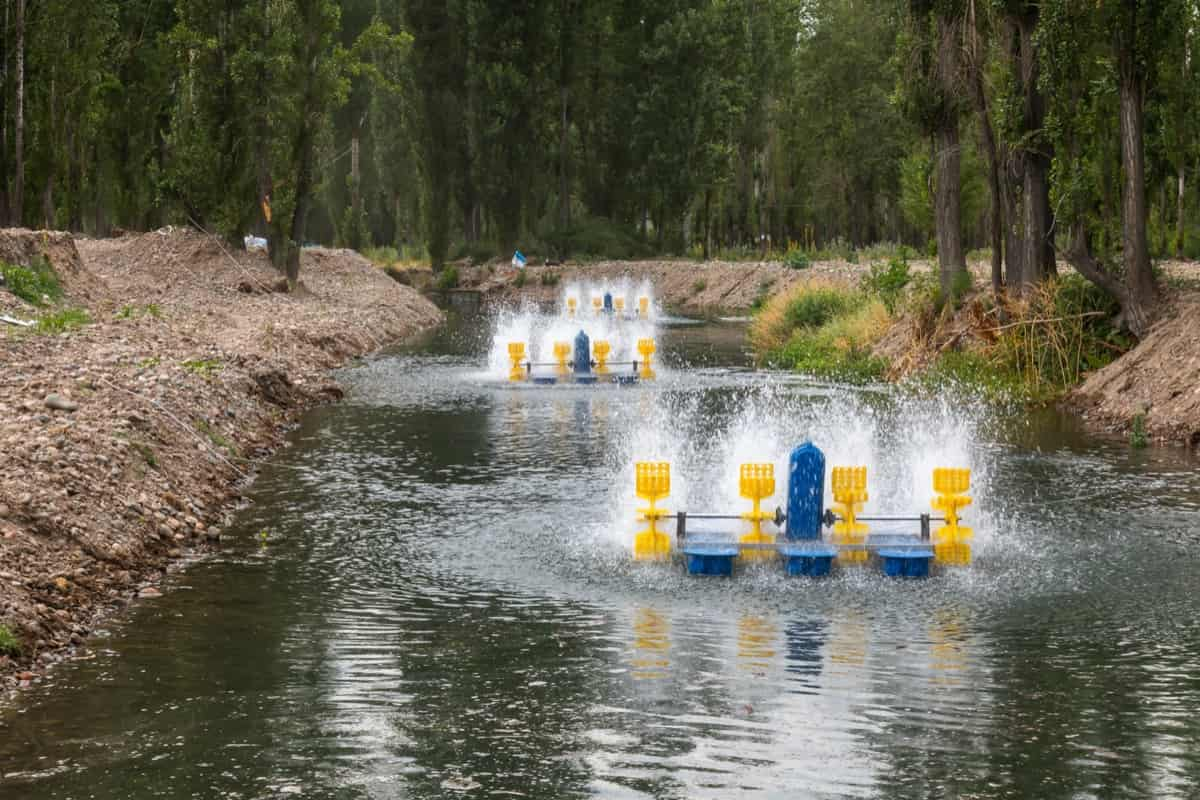
How to Measure DO Levels?
Dissolved oxygen (DO) is one of aquaculture’s most important water quality parameters. It measures the amount of oxygen dissolved in the water and indicates the aquatic environment’s health. DO levels can be measured using various methods, including titration, electrochemical, and colorimetric methods.
- The most common method for measuring DO levels in aquaculture is titration. This method places a water sample in a titration flask with an indicator solution. The indicator solution changes color when it comes into contact with oxygen, so the color change can be used to determine the DO level.
- Electrochemical methods are also used to measure DO levels. This method places an electrode in the water sample, passing a current through it. The electrode will produce a voltage proportional to the water’s oxygen amount.
- The most common method is aeration, which adds oxygen to the water by bubbling air. Bacteria filters also help to control DO levels by removing organic matter from the water that can lead to excessive algae growth. Chemical treatments are also sometimes used to control DO levels, but they should be used as they can be toxic to fish if not used properly.
- Colorimetric methods are similar to electrochemical methods, but instead of using an electrode, a chemical reagent changes color when it comes into contact with oxygen. The color change is then used to determine the DO level.
In case you missed it: How to Balance Water pH in Aquaculture: Water pH Decreasing and Increasing Methods
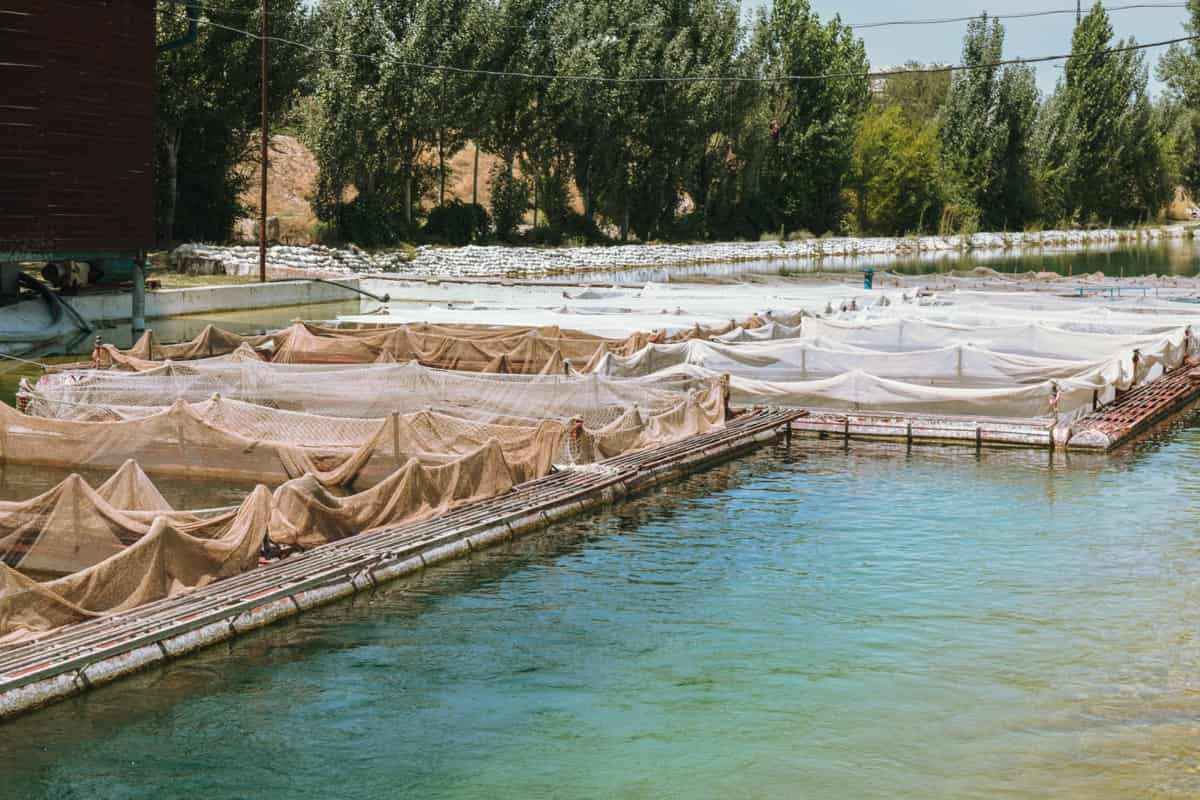
- The Winkler method is the most common method, which is a titration method. In this method, a water sample is mixed with manganese sulfate and allowed to stand for 30 minutes. The mixture is then titrated with sulfuric acid until the solution turns yellow. The acid required to change the color of the solution is proportional to the amount of dissolved oxygen in the sample.
- The most common method is using an oxygen meter, which measures the amount of dissolved oxygen in the water by measuring the electrical conductivity of the water.
- Gas analyzers are the most common type of dissolved oxygen meter used in aquaculture. They measure the amount of dissolved oxygen in the air using a gas chromatograph or mass spectrometer. An oxygen concentration meter measures the amount of oxygen in a water sample and can be used to monitor dissolved oxygen levels in aquaculture systems.
Once you have measured the DO levels in your system, you need to control them. The ideal DO level for aquaculture systems is around 6-8 ppm. If the levels are too low, fish will become stressed and may die. If the levels are too high, algae and other aquatic plants will grow excessively, leading to poor water quality.
Why is Dissolved Oxygen Important in Ponds?
Dissolved oxygen is an essential factor in successful aquaculture. It has a major influence on the health and growth of aquatic species and water quality. To ensure that your fish are healthy and happy, keeping your tank’s dissolved oxygen level within the ideal range for the type of fish being kept is essential.
By monitoring levels regularly and making adjustments accordingly, you can help guarantee a safe environment for all aquatic life forms in your tank or pond. Dissolved oxygen is necessary for fish to breathe and decompose organic matter. A high dissolved oxygen level indicates a healthy pond with good water quality. A low dissolved oxygen level can lead to fish death and poor water quality.
Aquaculture operations often use aeration to add dissolved oxygen to the water. This can be done with bubblers, which introduce air, or mechanical aerators, which pump air into the water. The amount of dissolved oxygen added to the water depends on the type of fish being raised and the conditions in which they are being raised. In addition to providing dissolved oxygen for fish to breathe, dissolved oxygen is also important for the health of the aquatic ecosystem. Dissolved oxygen helps to break down organic matter and keeps water quality high.
The Ideal Dissolved Oxygen Level for Different Types of Fish
Different types of fish have different ideal levels of dissolved oxygen in their water. For example, Trout and Salmon require higher levels of dissolved oxygen than other types of fish. The ideal dissolved oxygen level for Trout is between 7 and 8 ppm, while the ideal level for Salmon is between 6 and 7 ppm.
In case you missed it: Brackish Water Aquaculture, System, Benefits
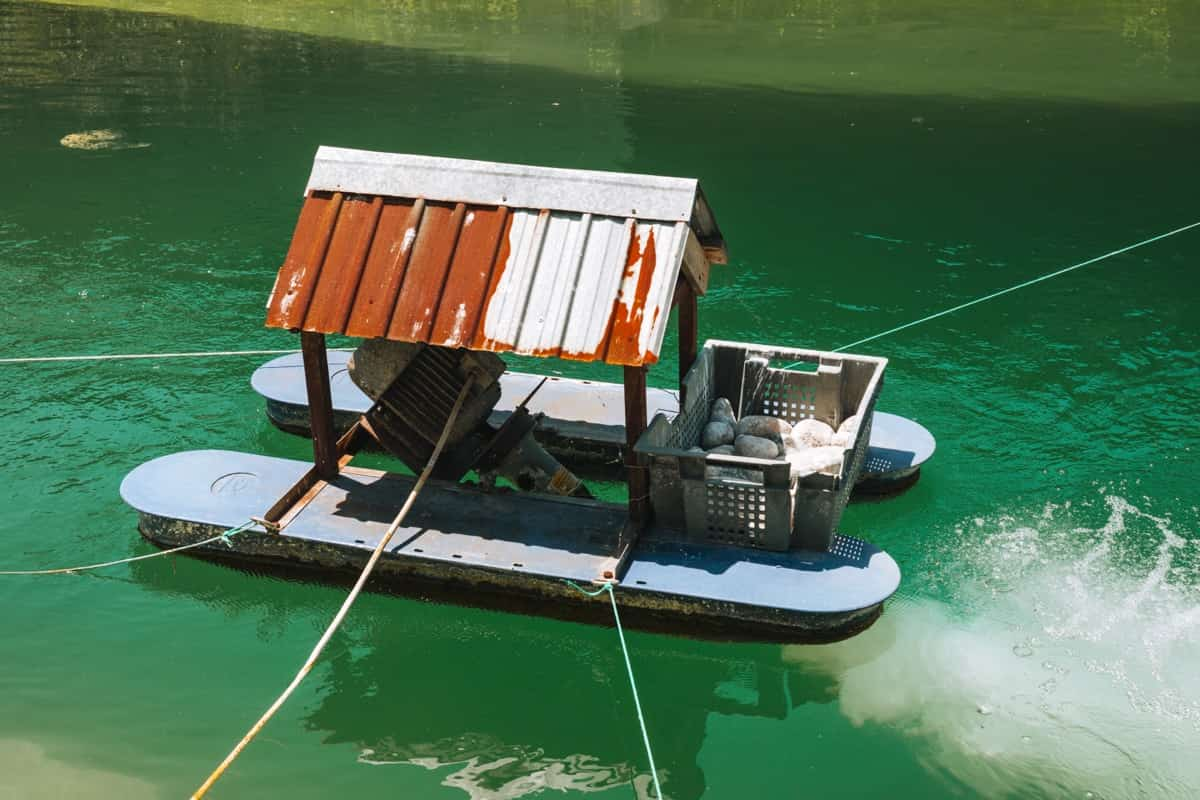
Factors Affecting Dissolved Oxygen in Aquaculture Systems
Several factors affect dissolved oxygen levels in aquaculture. The most important factor is the amount of oxygen dissolved in the water. This can be affected by several things, including the temperature of the water, pH, and amount of organic matter in the water.
- Temperature: Warmer water holds less DO than colder water. As water temperatures increase, the dissolved oxygen level decreases.
- Salinity: Saltier water holds less dissolved oxygen than freshwater. As the salinity of water increases, the dissolved oxygen level decreases.
- pH: Slightly acidic or basic conditions can reduce the amount of dissolved oxygen in the water. The ideal pH range for Dissolved oxygen is between 6.5 and 8.5.
- Algae growth: Algae consume dissolved oxygen as they grow. Under high levels of algae growth, the Dissolved Oxygen level can decrease to dangerously low levels.
Other factors that can affect dissolved oxygen levels include the type of fish being raised, as some fish require more oxygen than others, and the stocking density of the fish. If too many fish are in a given area, they will use up all of the dissolved oxygen in the water, leading to lower levels of dissolved oxygen.
It is important to monitor dissolved oxygen levels closely in aquaculture operations, as low levels of dissolved oxygen can lead to fish stress and even death. There are several ways to measure dissolved oxygen levels, including using an electronic meter or test kit.
What is the Importance of Dissolved Oxygen to Fish Growth?
- Dissolved oxygen helps fish and other aquatic animals to respire or breathe.
- Dissolved oxygen is necessary for the development and growth of fish larvae.
- Fish and other aquatic animals use dissolved oxygen to break down food and convert it into energy.
- Finally, dissolved oxygen helps to keep water temperatures stable, which is important for both fish growth and the overall health of aquatic ecosystems.
Dissolved Oxygen in Water ppm for fish
Dissolved oxygen (DO) is one of aquaculture’s most important water quality parameters. DO levels that are too low can lead to fish death, while too high levels can cause stress and reduced growth. The ideal DO level for fish is typically between 6-8 ppm. Fish require dissolved oxygen for respiration, so DO levels must be maintained at a certain level to support the fish population.
If DO levels drop too low, fish will become stressed and may die. In aquaculture, DO levels are typically monitored using a dissolved oxygen meter. Maintaining proper dissolved oxygen levels in aquaculture for the fish population’s health is important. DO meters monitor DO levels and ensure they remain within the ideal range for fish.
In case you missed it: Best Techniques to Increase Vannamei Shrimp Farming Yield
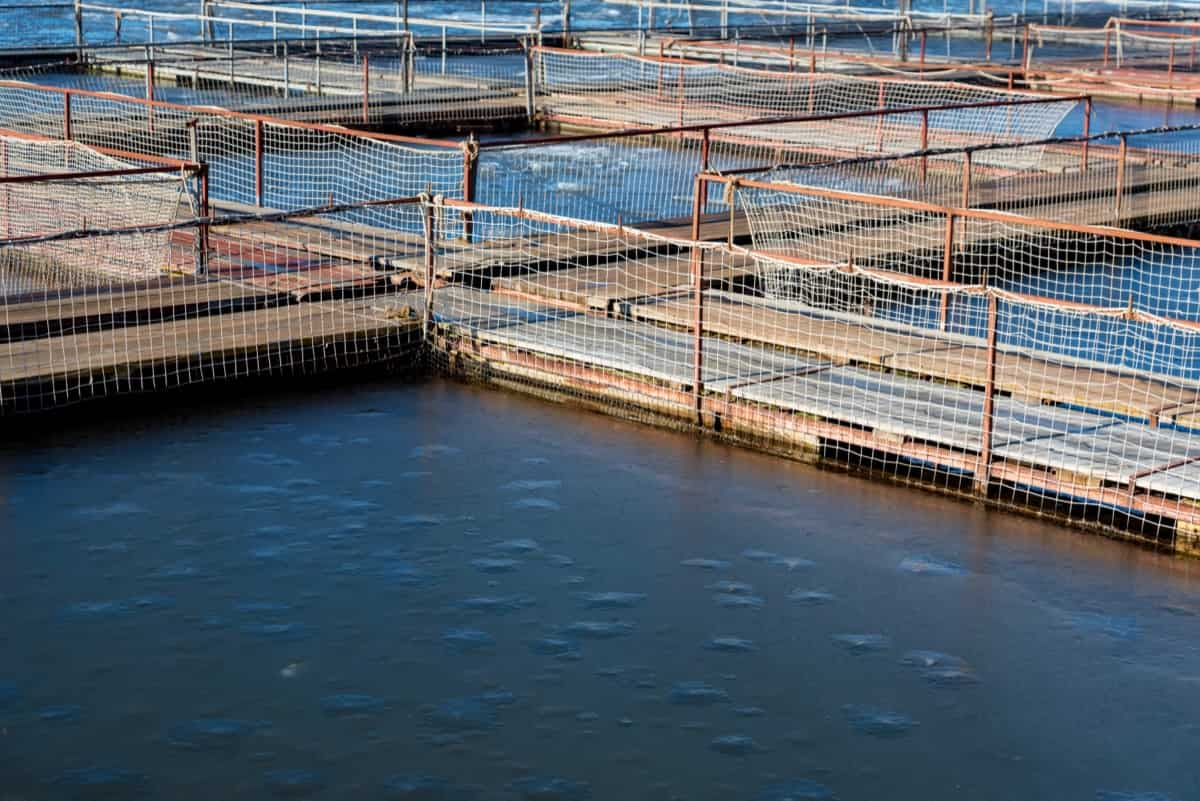
The Importance of Maintaining Proper DO Levels in Aquaculture
Maintaining proper dissolved oxygen (DO) levels in aquaculture is important for several reasons. DO is necessary for the respiration of aquatic animals and plays a role in the decomposition of organic matter. High DO levels can also increase growth rates and improve feed conversion efficiency. Several factors can affect DO levels in aquaculture systems, including water temperature, stocking density, and the type of aeration system used.
It is important to monitor DO levels regularly and make adjustments as needed to ensure that optimal conditions are maintained. Maintaining optimal dissolved oxygen levels is crucial for aquaculture. Dissolved oxygen is necessary for the survival of fish and other aquatic creatures. It is also important for the growth and development of plants. Dissolved oxygen levels can also be affected by heavy metals and organic matter.
It is important to monitor dissolved oxygen levels in aquaculture systems regularly. A sudden drop in dissolved oxygen levels can harm fish and other aquatic creatures. Conversely, fish may suffocate and die if dissolved oxygen levels become too low. There are several ways to raise dissolved oxygen levels in aquaculture systems. One way is to aerate the water with an air pump.
Another way is to add waterfalls or fountains, which will aerate the water as it flows over the waterfall or fountain. In some cases, it can be necessary to use chemicals to raise dissolved oxygen levels. One common chemical used is sodium bicarbonate (baking soda). Sodium bicarbonate can be added directly to the water, mixed with food, and fed to fish.
Effects Of Low Dissolved Oxygen in Aquaculture
One of the most important factors in aquaculture is the dissolved oxygen level. Oxygen is necessary for fish to breathe and for the overall health of the aquatic ecosystem. When dissolved oxygen levels are low, it can cause several problems for both fish and their environment. Fish require oxygen to live and grow. When dissolved oxygen levels are low, fish may become stressed and have difficulty breathing. This can lead to reduced growth rates, increased susceptibility to disease, and even death.
In addition, low dissolved oxygen levels can cause changes in the behavior of fish, making them more aggressive or less active. The environment is also affected by low dissolved oxygen levels. Aquatic plants may suffer from reduced growth or die off altogether. This can increase algae growth, negatively impacting water quality and clarity. In addition, low dissolved oxygen levels can cause changes in the microbial community in the water, leading to an increase in harmful bacteria and a decrease in beneficial bacteria.
In case you missed it: Key Rules to Improve Feed Conversion Ratio (FCR) in Shrimp Culture
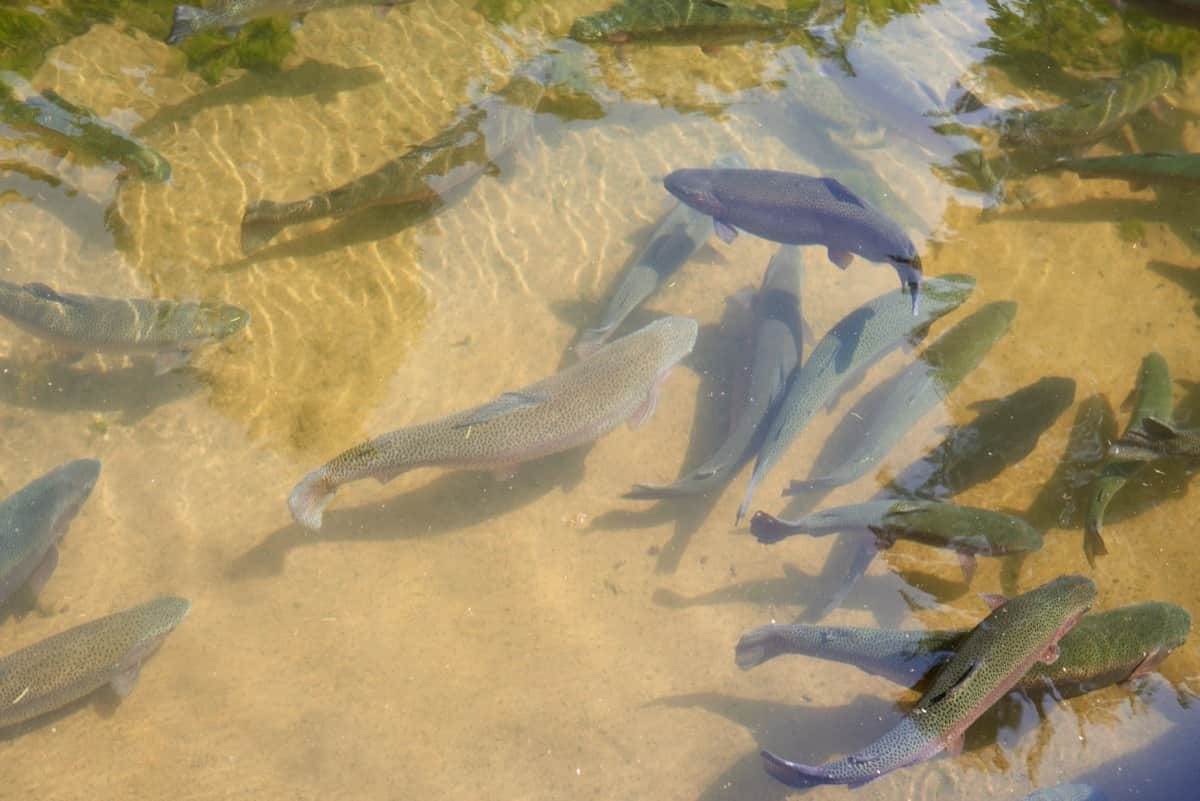
Ways to Improve Dissolved Oxygen Levels in Aquaculture
- Use aeration to add dissolved oxygen to the water. Aeration can be accomplished with diffusers, surface aerators, or by circulating water through an airlift pump.
- Increase the surface area of the water body. This can be done by adding vegetation or rocks to the system to increase the exposed surface area for gas exchange.
- Reduce the organic load in the system. This can be done by increasing filtration, removing uneaten food and waste, and reducing stocking density.
- Increase water turnover rate. This will help ensure fresh, oxygen-rich water is continually added.
Conclusion
Dissolved oxygen (DO) is one of aquaculture’s most important water quality parameters. It measures the amount of oxygen dissolved in the water and is essential for the survival of fish and other aquatic animals. Dissolved oxygen is essential for aquatic species’ survival and growth, making monitoring its level crucial in aquaculture systems.
- Economical Aquaculture: A Guide to Low-Budget Fish Farming
- 15 Common Planting Errors That Can Doom Your Fruit Trees
- How to Make Houseplants Bushy: Effective Tips and Ideas
- Innovative Strategies for Boosting Coconut Pollination and Yield
- Pollination Strategies for Maximum Pumpkin Yield
- The Complete Guide to Chicken Fattening: Strategies for Maximum Growth
- Natural Solutions for Tulip Problems: 100% Effective Remedies for Leaf and Bulb-Related Issues
- Revolutionizing Citrus Preservation: Towards a Healthier, Greener Future
- Natural Solutions for Peony Leaf and Flower Problems: 100% Effective Remedies
- Maximizing Profits with Avocado Contract Farming in India: A Comprehensive Guide
- Natural Solutions for Hydrangea Problems: 100% Effective Remedies for Leaf and Flowers
- The Ultimate Guide to Choosing the Perfect Foliage Friend: Bringing Life Indoors
- From Sunlight to Sustainability: 15 Ways to Use Solar Technology in Agriculture
- The Ultimate Guide to Dong Tao Chicken: Exploring from History to Raising
- The Eco-Friendly Makeover: How to Convert Your Unused Swimming Pool into a Fish Pond
- Mastering the Art of Delaware Chicken Farming: Essentials for Healthy Backyard Flocks
- 20 Best Homemade Fertilizers for Money Plant: DIY Recipes and Application Methods
- How to Craft a Comprehensive Free-Range Chicken Farming Business Plan
- Brighten Your Flock: Raising Easter Egger Chickens for Beauty and Bounty
- How to Optimize Your Poultry Egg Farm Business Plan with These Strategies
- Subsidy for Spirulina Cultivation: How Indian Government Schemes Encouraging Spirulina Farmers
- Ultimate Guide to Raising Dominique Chickens: Breeding, Feeding, Egg-Production, and Care
- Mastering the Art of Raising Jersey Giant Chickens: Care, Feeding, and More
- Ultimate Guide to Raising Legbar Chickens: Breeding, Farming Practices, Diet, Egg-Production
- How to Raise Welsummer Chickens: A Comprehensive Guide for Beginners
- How to Protect Indoor Plants in Winter: A Comprehensive Guide
- Ultimate Guide to Grow Bag Gardening: Tips, Tricks, and Planting Ideas for Urban Gardeners
- Guide to Lotus Cultivation: How to Propagate, Plant, Grow, Care, Cost, and Profit
- Agriculture Drone Subsidy Scheme: Government Kisan Subsidy, License, and How to Apply Online
- Ultimate Guide to Raising Araucana Chickens: Breed Profile, Farming Economics, Diet, and Care
- Bringing Hydroponics to Classroom: Importance, Benefits of Learning for School Students
- Ultimate Guide to Raising Polish Chickens: Breed Profile, Farming Economics, Diet, and Care
- Ultimate Guide to Raising Australorp Chickens: Profile, Farming Economics, Egg Production, Diet, and Care
- Silkie Chicken Farming: Raising Practices, Varieties, Egg Production, Diet, and Care
- Sussex Chicken Farming: Raising Practices, Varieties, Egg Production, Diet and Care
- Homemade Feed Formulations for Livestock: Discover Cost-effective Starter to Finisher Feed Recipes
Very Nice information
I am satisfied with all the extra im formation givens in this agriculture business.